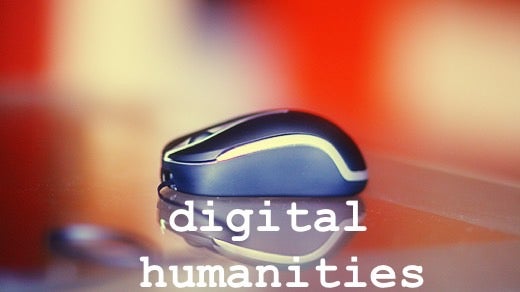Open source software is changing academic research, enabling new discoveries and innovation in ways that were previously impossible. In academia, scholars in the humanites are using technology to conduct research that would have been an extremely laborious undertaking before the advent of computers. This meeting of technology and the humanities is called the digital humanities. In my final monthly Digital Humanities column, I share three resources that will help you learn about this exciting and interesting field.
What is Digital Humanities?
Digital Humanities as a discipline (or sub-discipline) is fairly young, so the definition of Digital Humanities is a still a little fluid.
Digital Humanities can be different things to different people. Some people doing work in the Digital Humanities might not even consider themselves Digital Humanities scholars. The site "What Is Digital Humanities?" is designed by Jason Heppler and displays quotes from people who participated in the Day of DH from 2009 to 2014. The site displays one quote at a time, and there are a over 800 quotes, so you will need to refresh the page a lot to see them all. Alternatively, you can download a CSV file containing all the quotes and browse through it that way.
This site is a great way to learn about Digital Humanities from the perspective of many different people involved in the field.
Digital Humanities Now, recently redesigned and improved
When it comes to learning about new digital humanities projects, Digital Humanities Now is one of the first places to look. The site uses the PressForward WordPress plugin (which I covered in more detail here) to curate the best Digital Humanities content from a large number of sources. The curating process is collaborative and the recent updates to the site make the process even more transparent.
The new Subscribed Feed page displays a list of all the feeds currently aggregated by DHNow, including information about the current status for all the feeds, so sites with broken feeds can fix the problem and ensure that their content is considered by DHNow's editors. Other great new features added to the site include a responsive design with improved navigation and a new blog which will showcase special items, including the work of the site's Editors-in-Chief.
Digital Humanities on Twitter
It should come as no surprise that many of the scholars involved in the Digital Humanities are active on Twitter. The social network is an excellent tool for scholars who use digital tools to enhance their scholarly work in the humanities.
To explore the connections between Digital Humanities Twitter users, Martin Grandjean analyzed a list of over 1400 Twitter accounts. Grandjean states the list of accounts is not complete, but despite that admission, the list contains enough of the major Digital Humanities accounts to make it a who's who of Digital Humanities Twitter users. The list is certainly worth following on its own, but Grandjean's work make the underlying connections between users easy to understand by using visualizations created with Gephi.
Through his visualizations, you can see the big name Digital Humanities Twitter users and how everyone on the list connects with each other. One chart looks at the follower/following ratio, with the top accounts having labels so you can see who leans towards being a heavy follower versus having a large following. The methodology of the project is interesting, and it might make a good project for someone to recreate with other communities of Twitter users.
Are you a digital humanities scholar using open source software in your projects? If so, consider submitting your story to Opensource.com. We would love to help you share your research with the world!






Comments are closed.